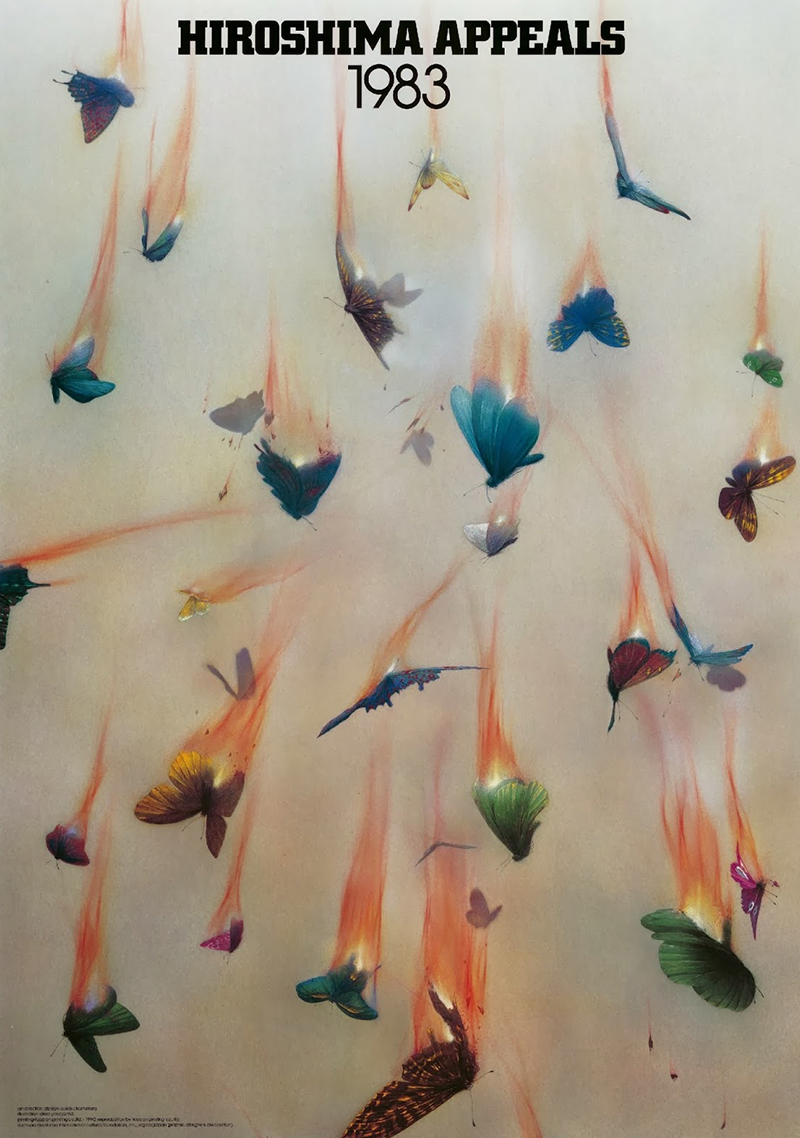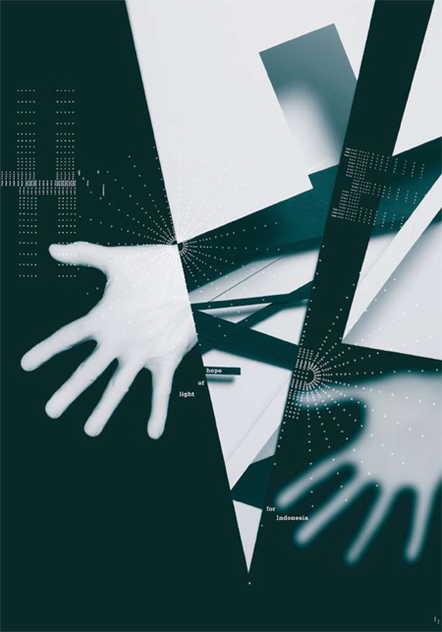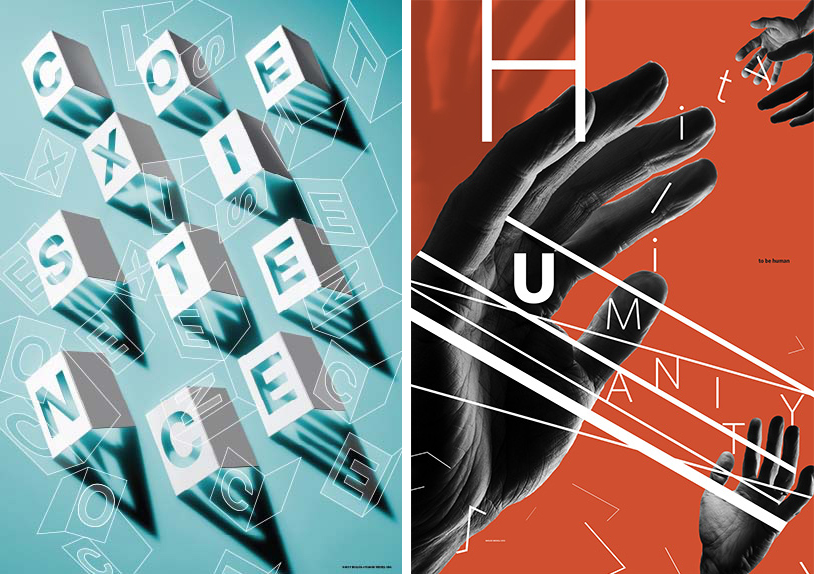With over 35 years under their belts since forming their first studio, multi-faceted, boundary-crossing, shape-shifting designers and 2017 AIGA Medalists Nancy Skolos and Thomas Wedell have amassed such a plurality of critically-recognized projects that they could very well knock a person over by the sheer magnitude of them. And that’s a very good thing, because their work (and its impact) is not something to be missed.
Early on, Skolos and Wedell worked on a variety of projects with equally variable mediums, but over the years they have honed their focus on the much-loved poster format. For Skolos and Wedell, the format has been key to their success; although 2D, their equal interest in photography allows them infinite possibility to capture the 3D world in which we live.
Skolos and Wedell have done branding for long-standing design student competitions, exhibitions (including those where they now teach at RISD), commercial launches, festivals, and invitationals. They have both designed for competitions and won them. However, no matter the subject—commercial or social—the duo approaches a project in the same way: to “use aesthetics to motivate people’s thinking.” Wedell continued: “That’s the challenge—getting people to start thinking rather than just accepting. Enriching the culture through aesthetic qualities, graphic design can enrich people’s lives. A logo becomes an opportunity. The best designers put their soul into it because [they’re] trying to get a result that’s greater than the subject [they’re] depicting.”
This has a particular effectiveness when applied to the social issues which Skolos and Wedell felt their work could impact most. Lucky for us, it comes at a time when this philosophy has never been more needed.
A piece Skolos and Wedell feel does this with particular impact is “Hiroshima Appeals,” a poster by Japanese designer Yusaku Kamekura from 1983.

Hiroshima Appeals, 1983, Yusaku Kamekura
Without many visual cues, the viewer is left to respond to what is seen through the gray mist–a collection of colorful butterflies, set aflame by atomic blast, descending through the composition. “When you first see it, it changes your perspective—moves [the bomb] out of the context of war and into the position of humanity,” remarked Wedell, “This is beauty that has been destroyed, and humanity that has been destroyed.”
It is this kind of guttural response, divorced from pre-conceived notions of the issue at hand, that Skolos and Wedell try to incite from their own work. “A lot of times, with social issues, people err on the side of being too direct, too ‘PSA.’ The best thing we can do is bring that level of design to it,” Wedell said. And they do, to great result.
Take, for example, their poster “Light of Hope.” Skolos and Wedell were invited to design a poster that could raise funds to send to Indonesia after the country was devastated by a tsunami in 2005. In their final design, “Light of Hope” played with the duality of on the one hand, human crisis, and on the other, hope and humans helping each other by depicting hands reaching through the destruction and across the page to each other.

Light of Hope, 2005, Nancy Skolos + Thomas Wedell
“The only thing we can do as designers is this,” the duo said, “To get people to acknowledge [the crisis]. Cultures tend to isolate themselves. Someone else’s tragedy is ignored. We were trying to get people to talk about it.”
The pair further emphasized the importance of coming together with their poster, “Coexist. ”But again, there are no particularities. “Metaphors come from convention, but we like to extend that convention through abstraction,” said Skolos. (Such as with shadow and repetition rather than direct visuals.)
Skolos went on, “By bringing reason and subjective emotions together on a picture plane, that’s what we hope happens—that people will expand their point of view. We don’t depend on the trend of reaction. We allow people to discover themselves through the piece. That’s the humanity of it—meeting other people.”

Left: Coexistence, 2015, Nancy Skolos + Thomas Wedell. Right: To be Human, 2012, Nancy Skolos + Thomas Wedell.
This is what makes their humanitarian design work so successful. Showing a moment that might otherwise be political as abstract forces the viewer to a have a reaction that is visceral rather than partisan; rather than a reaction embedded within a viewer’s own fixed point of view, their work asks the viewer to appeal to their best self—and to the human compassion we have for eachother.
A cynic might question the ability of a poster to make an impact. But history indicates that the humble poster has great powers of persuasion. Throughout the twentieth century, and the wars that took place within it, posters have been a means of choice with which to reach mass audiences and influence the decisions they make.
“We think of the impact of our pieces all the time,” Wedell said, “We’re trying to think of all possible types of interpretations. That’s the challenge—to getting people to start thinking rather than just accepting. The connections made from design can then be discussed in a more civilized way—prompting discussions that bring people closer together and [allow them to] work together. Rather than induce fear and loathing, induce interconnectivity. Make joy for people to exchange. Once you open that you have a great society going. That’s how design can work.”
So what is a poster’s ability to be a force for good? To cause us to lean in towards our humanity? Well, that depends on the ability of the messenger. And through their work, Skolos and Wedell carry that all too fragile message into a world much in need of coming together.
